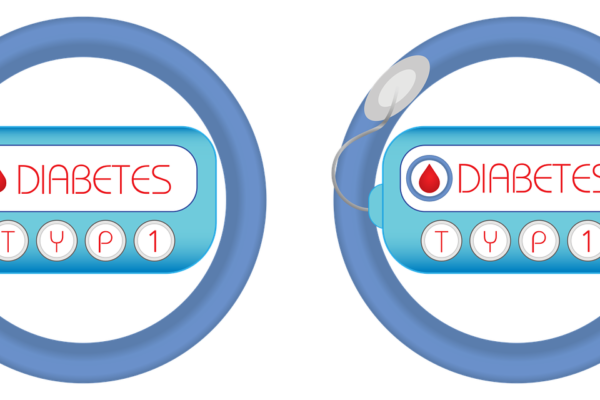Introduction and Background
Polycystic Ovary Syndrome (PCOS) is a hormonal problem that affects millions of women worldwide. This condition affects the function of the ovaries, causing many symptoms and health problems. PCOS is characterized by enlarged ovaries containing many small cysts. The prevalence of PCOS varies worldwide and affects approximately 5-10% of women of reproductive age. It is one of the most common endocrine diseases in women.PCOS not only affects children’s health, but also has a greater impact on overall health.
Polycystic ovary syndrome can cause many symptoms such as irregular menstruation, hair growth (hirsutism), acne and oily skin, difficulty in gaining and losing weight, few blood vessels and depression. These symptoms can affect a woman’s quality of life, self-esteem, and well-being. In addition to its physical and emotional effects, PCOS is associated with a risk of many health problems. Women with PCOS are more likely to produce insulin, which can lead to type 2 diabetes. They also have a higher risk of developing metabolic diseases such as high blood pressure, high cholesterol and heart disease. In addition, PCOS can make it difficult to conceive and increase the risk of pregnancy.Understanding PCOS is important for physicians. Early detection and appropriate management can help reduce symptoms, reduce long-term health risks, and improve overall quality of life for affected individuals. Physicians must be aware of PCOS and its potential complications in order to provide an accurate diagnosis, effective treatment, and effective care. Research and education on PCOS are essential to improve understanding of this complex disease. By discovering root causes, factors, symptoms and treatments, we can improve PCOS management strategies and empower women to take control of their health.
In this report, we’ll take a closer look at the causes and risks associated with PCOS, the various symptoms and diagnoses, the treatment options available, the areas most affected, the medications available, and large businesses. This comprehensive review aims to provide a better understanding of polycystic ovary syndrome and to help develop methods for its diagnosis and treatment.
Causes and risks
Polycystic ovary syndrome (PCOS) is a complex disease caused by many factors. Many factors contribute to the development and progression of PCOS, including hormonal imbalance, genetic predisposition, and lifestyle.
Hormonal imbalances and insulin resistance:
Polycystic ovary syndrome is characterized by hormonal imbalances, especially increased levels of androgens (male hormones) such as testosterone. These imbalances can affect the function of the ovaries and lead to cyst formation. Insulin resistance, a condition in which body cells become less sensitive to insulin, is often associated with PCOS. Insulin resistance stimulates the ovaries to produce more androgens and exacerbates the hormonal deficiency.
Genetic predisposition:
There is evidence of a genetic predisposition to the development of polycystic ovary syndrome. Women with a history of PCOS are more likely to develop this disease. Specific genetic changes have been identified, such as those related to insulin signaling and androgen production, that may contribute to the development of PCOS. However, the genetic mechanisms of PCOS are complex and require further research to understand.
Lifestyle factors, including obesity and sedentary lifestyle:
Lifestyle factors play an important role in the development and severity of PCOS. Obesity is associated with polycystic ovary syndrome, and research has shown that the incidence of polycystic ovary syndrome is higher in overweight and obese women. Excess tissue causes insulin resistance and can lead to the development of PCOS by disrupting the hormonal balance. A sedentary lifestyle and unhealthy food choices can also contribute to weight gain and worsening of PCOS symptoms.
Other causes of PCOS are:
Inflammation: Chronic low-grade inflammation in the body may play a role in the development of PCOS and its associated metabolic complications.
Environmental factors: Exposure to certain environmental factors, such as endocrine disruptors, can cause hormonal imbalance and cause PCOS.
Stress: Chronic stress can affect hormone regulation and lead to the development or worsening of PCOS symptoms.
It is important to remember that although these factors are relevant to the development of PCOS, interaction and error are still under investigation. PCOS is a complex disease affected by a combination of genetic, hormonal and environmental factors.
Symptoms and diagnosis
Polycystic Ovary Syndrome (PCOS) has many symptoms that may appear differently in affected individuals. The diagnosis of PCOS is based on certain criteria set by medical organizations. This page provides an in-depth look at the symptoms of PCOS and the diagnostic criteria used to define them.
Irregular Menstruation:
One of the symptoms of PCOS is menstrual irregularity. Women with PCOS may have short or long periods or not menstruate at all. The imbalance is caused by hormonal imbalances and inhibition of ovulation because the ovaries do not release eggs regularly.
Excessive hair growth (hirsutism):
PCOS can cause excessive hair growth, called hirsutism. This condition is characterized by coarse, dark hair on areas commonly associated with hair growth in men, such as the face, chest, back, and abdomen. High androgen levels (male hormones) can cause hirsutism in women with PCOS.
Acne and oily skin:
Women with PCOS often experience acne and oily skin, especially on their faces.
Difficulty in gaining and losing weight:
Difficulty in gaining and losing weight is common in women with PCOS. The hormone deficiency and insulin resistance associated with PCOS can cause weight gain, especially in the abdomen. Losing weight can be difficult for people with PCOS, making weight management an important part of PCOS treatment.
Mood changes and Depression
PCOS can have a significant impact on mental health and well-being.
Many women with PCOS report experiencing mood swings, anxiety, and depression. The psychological effects can be attributed to the hormone deficiency and the impact of PCOS on self-esteem, body image, and fertility issues.
PCOS Diagnostic Criteria:
Medical centers have developed criteria based on observation and diagnosis for the diagnosis of PCOS. The most commonly used diagnoses include those defined by the Rotterdam criteria.
Ovarian Cyst
Ovarian cysts are fluid-filled sacs found in the ovaries, which are the egg and hormone- producing cells of pregnant women. These cysts occur and can occur at any age, from youth to adulthood.
Ovarian cysts can occur for a variety of reasons, including the following:
Follicular cysts: In each month of the menstrual cycle, eggs are formed in sacs called follicle Sometimes the follicle does not release the egg or does not molt after the egg is released.This can cause the follicles to grow and turn into cysts called follicular cysts.
Luteal cyst: After the egg is released, the follicle usually shrinks and forms a group of cells c alled the corpus luteum. Sometimes the corpus luteum fills with fluid and forms a cyst. These cysts are called corpus luteum cysts.
Endometriosis: Endometriosis is a condition in which endometrial tissue (the inner lining of the uterus) grows outside of the uterus, usually in the ovaries. When this happens, cysts called endometriomas or chocolate cysts can form on the ovaries due to old blood that has turned brown.
Cystadenoma: A cystadenoma is a cyst that forms outside of the ovary. Most are filled with water and can grow.
Dermoid cysts: Dermoid cysts are formed by the cells that make up the human egg. They can have many types of tissues such as hair, skin, and even teeth.
Formation of the Cyst

Drugs commonly used in the treatment of PCOS:
Metformin: Metformin is a drug used to control insulin, a type of PCOS. It helps control blo od sugar and can improve hormone imbalances.
Clomiphene citrate: Clomiphene citrate, commonly known as clomiphene clomiphene, is a drug used to induce pregnancy in women with PCOS who are trying to conceive.
It stimulates the ovaries to release eggs and increases the chances of pregnancy.
Oral contraceptives: Birth control pills containing a combination of estrogen and progestin a re often used to regulate the body’s menstrual cycle, lower androgen levels, and reduce condit ions such as acne and excessive hair growth.
Antiandrogens: Medications such as spironolactone and finasteride can be used to control ex cessive androgen production, which can cause symptoms such as acne and hirsutism
Gonadotropins: In some cases, injectable hormones called gonadotropins are used to stimula te ovulation in women with PCOS who do not respond to oral medications.
PCOS Scientific Research and Medical Development:
Research and continuous development is focused on supporting medical treatment for PCOS. These efforts aim to address the underlying hormonal issue, improve fertility, and maintain th e long-term health of the condition. Some of the newer studies include:
Insulin sensitizers: Newer insulin sensitizers, such as pioglitazone and inositol, are being inv estigated for their ability to improve insulin sensitivity and reproductive outcomes in women with PCOS.New Hormone Therapies: Researchers are investigating the use of alternative hor mone therapies, such as aromatase inhibitors and selective estrogen receptor modulators (SE RMs), in place of or in addition to traditional therapies, such as clomiphene citrate therapy.
Diet and Nutrition: The Role of Dietary Modification, Exercise, and Weight Management in the Management of PCOS Symptoms More attention and ongoing research are investigating their benefits on the development and growth of metabolic diseases in women with PCOS.
Market Size and Growth Report:
The PCOS Pharmaceutical Market is expected to see significant growth in the coming years. The increasing incidence of polycystic ovary syndrome along with the increasing demand for effective treatment is driving the expansion of the market. While the size of the business may vary depending on factors such as geography and market dynamics, the market should see gr owth for several reasons: Improvement and diagnosis can lead to greater growth in patients se eking treatment, thus driving. Demand for PCOS drugs.
Technological Advances: Advances in drug discovery and new drugs have led to the develop ment of multi-targeted and effective treatments for polycystic ovary syndrome.
Collaborations and Partnerships: Collaborations between pharmaceutical companies, resea rch centers and healthcare organizations have fostered innovation and improved medicine.
Key Players of the PCOS Pharmaceutical Market:
Many pharmaceutical companies play an important role in the development, manufacture and distribution of PCOS Pharmaceuticals.
Some of the key players in the market are:
Bayer AG Pfizer
Merck & Co
Teva Pharmaceutical Industries Ltd Allergan
Novartis AstraZeneca Sanofi
Johnson & Johnson
Eli Lilly and Company
These companies are investing in research and development to bring new PCOS treatments to market and meet the demands of patients worldwide.As the PCOS drug market continues to grow, continued research, collaborative efforts and cli nical advances are expected to drive further growth and improve the quality of care for PCOS
Worldwide Polycystic Ovary Disorder Treatment Showcase Report Scope
| Report Coverage | Details |
| Base Year: | 2021 |
| Market Size2021: | USD 3.2 Billion |
| Forecast Period: | 2021 – 2030 |
| Forecast Period 2021 – 2030 CAGR: | 4.8% |
| 2030 Value Projection: | USD 4.9 Billion |
| Historical Data for: | 2017 – 2020 |
| Companies Covered: | Sanofi S.A., Amneal Pharmaceuticals, Inc., Laurus Labs Limited, Zydus Pharmaceuticals, Inc., Prasco Laboratories, Dr. Reddys Laboratories, Cadila Pharmaceuticals, Novartis International AG, Concordia Pharmaceuticals Inc., Evotec SE, Covis Pharmaceuticals, Inc., Cardinal Health, Aphena Pharma Solutions Tennessee, Inc., Mylan N.V., McKesson Corporation, Teva Pharmaceutical Industries Ltd, Lupin Pharmaceutical, Sun Pharmaceutical Industries Ltd., Bayer AG |
Conclusion
In conclusion, this report provides a comprehensive overview of Polycystic Ovary Syndrome (PCOS) covering various aspects such as etiology, symptoms, treatment options, most affected areas, available drugs and large businesses. Polycystic ovary syndrome is an endocri ne disease that affects women of childbearing age, characterized by hormonal imbalances and multiple cysts in the ovaries.
The report begins with an article describing the causes of PCOS, including genetic and enviro nmental factors, insulin resistance, and hormonal imbalance. It also discusses PCOS symptoms such as irregular periods, excessive hair growth, acne, weight gain, and fertility issues.The Treatment options section provides insight into the various methods used to manage PCOS.This includes lifestyle changes such as diet and exercise, as well as oral contraceptives, antian drogens, insulin sensitivity, and anti ovulation medications such as clomiphene citrate. In conclusion, this report is useful for a better understanding of PCOS. It provides an overview of causes, symptoms, treatment options, most commonly affected areas, available drugs & market environment.This report aims to explore the many aspects of PCOS, raise awareness, support research and development, and improve the quality of care for women with the condition.
References –
0to%20induce,the%20ovaries%20and%20be%20released.
14-51-million-by-2027-at-cagr-of-5-4-sanofi-s-a-par-pharmaceutical-merck-co-inc-teva-






Leave a Reply